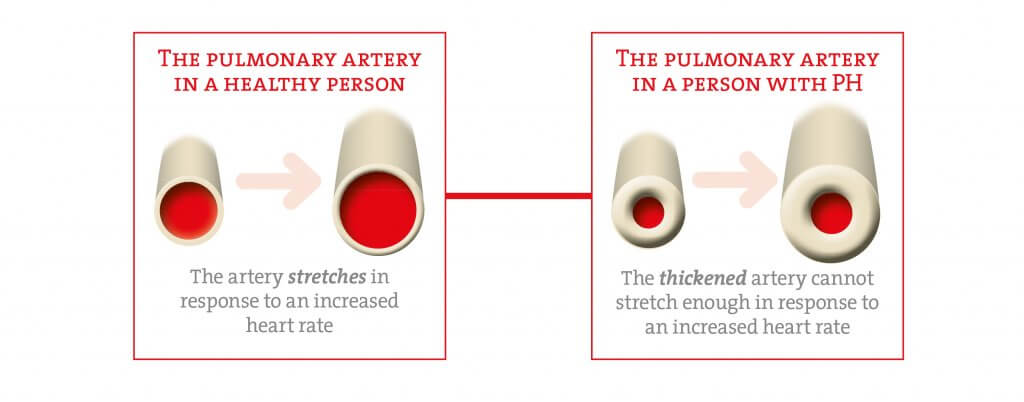To understand what PH is, it first helps to understand a bit about the circulatory system. As shown in the figure, the heart pumps oxygen-poor blood to the lungs so the blood can take up oxygen. Blood that is oxygen-poor is normally shown on diagrams as blue, whereas oxygen-rich blood returning from the lungs is normally shown in red.
During periods of exercise, the heart beats more quickly to get more oxygen to the muscles. At the same time, the blood vessels carrying blood to the lungs (the pulmonary arteries) expand to allow more blood through. The pulmonary arteries do this by stretching slightly. In a person with PH, the walls of the pulmonary arteries are thicker, so are less able to stretch.

In a person with PH, because the pulmonary arteries are less able to stretch, the heart has to work harder to pump blood to the lungs. If the heart has to work harder than usual over a long period of time (months or years), it begins to work less effectively.